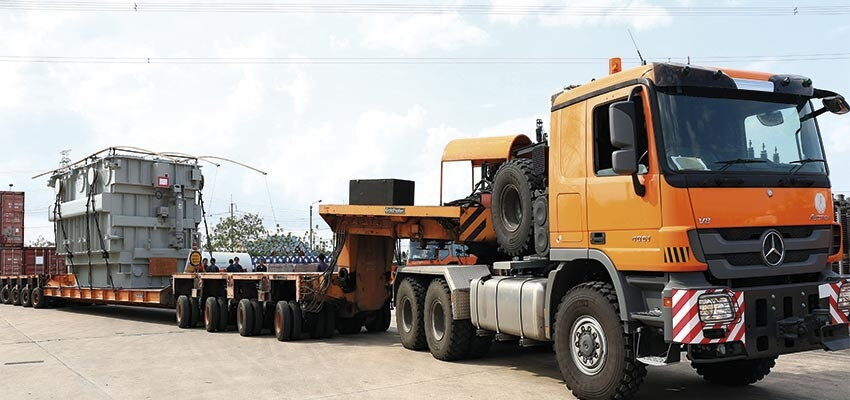
Transformer handling and transport
1. Introduction Severe damage may be caused to transformers when they are subjected to challenging transport conditions such as troubled sea during sea transportation, or...
byManuel BOLOTINHA

1. Introduction
Severe damage may be caused to transformers when they are subjected to challenging transport conditions such as troubled sea during sea transportation, or a rough road during road transportation.
Although it is known that transportation under these conditions will cause vibrations and small shocks in packages and equipment, it is also known that if packaging and fixing of the equipment are not suitably performed, the amplitude of those vibrations and shocks can cause non-visible damages which can further lead to a failure of the equipment [1, 2].
It must be emphasized that this paper does not intend to be an in-depth document on these problems because they are generally known; however, as it is unfortunately still a frequent scenario that transformers arrive to site with visible and/or concealed damages caused by improper packing, handling or transportation procedures, the article sets out to reiterate these issues and raise awareness of the procedures aimed at preventing them from happening.
For this reason, it cannot be stressed enough how important it is to draw the attention of manufacturers, logistics and transportation companies, contractors and transformer owners to this issue and the respective consequences.
In order to prevent the cases that lead to damage and destruction, it is necessary to perform some special tests during Factory Acceptance Tests (FAT), such as those defined in IEC Standard 60076-1 [3], IEEE C57.12.90 [4], IEEE C57.152 [5] and IEC 60137 [6]), and then repeat them during Site Acceptance Tests (SAT) whenever the conditions of handling and transportation indicate any potential damage.
Recommended special tests for this purpose include the following:
- Measurement of frequency response analysis (SFRA) (see section 3)
- Measurement of tan δ (dielectric losses) of the bushings (see section 3)
- Determination of capacitances between windings and windings to earth
- Measurement of DC insulation resistance between windings and windings to earth
- Measurement of DC insulation resistance core to earth and core frame to earth
- Single-phase excitation current tests
- Magnetic balancing tests
The test results obtained during FAT and SAT must be compared and conclusions about possible damage to the transformers must be drawn.
Although a reference has been made to both IEC and IEEE standards, IEC standards make the basis for this article considering they are international standards used worldwide; compared to IEEE standards which are U.S. standards used only in a few countries.







